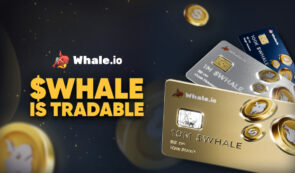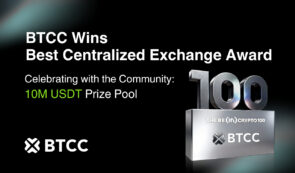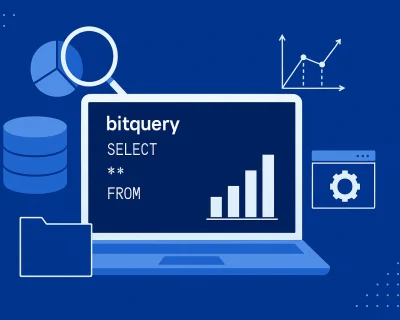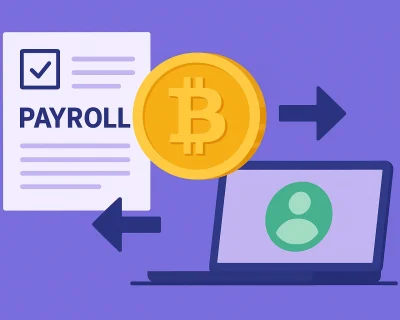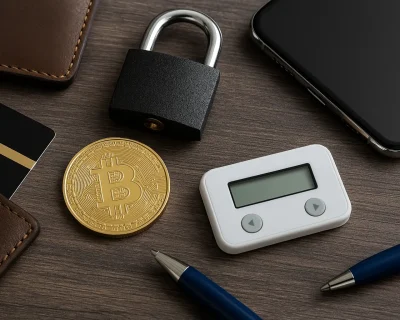Best Cryptocurrency Exchange: A List of Top Trading Platforms
Whether you’re in crypto for personal or business reasons, finding the best crypto exchange that suits your needs can significantly improve the trading experience.
In the end, a crypto exchange is a specific platform where users can sell or buy cryptos for other cryptos or fiat currencies. And thanks to the outstanding dynamics of the cryptocurrency industry, we now have a plethora of trading platforms to choose from. But because there are so many, people wonder which platform is the best.
To make things easier, we have compiled a list of some top trading platforms to help you find the best cryptocurrency exchange. You may have heard of most of them, but here you will find out more details on what they are and how they operate.
Here, we’ve chosen the best cryptocurrency exchanges by looking at their liquidity, trading volume, capabilities, listed cryptocurrencies, pairs, fees, reputation, and the community that gathers around them.
Quick note. If the best crypto exchange is decentralized for you, we respect your opinion. We only took into consideration the centralized exchanges that deal with cryptocurrencies directly.
The decentralized exchanges and mainstream trading apps and platforms that got involved with crypto did not make this article’s purpose.
List of the Best Cryptocurrency Exchange
Below are our picks for the best cryptocurrency exchanges in 2022.
Binance
Binance is the biggest cryptocurrency exchange by trading volume and user base (over 80.7 million monthly active users in November 2022). At the time of writing this article, the 24-hour trading volume exceeds $13 billion.
Binance offers an all-purpose desktop interface together with a mobile trading app.
The platform offers spot trading, features trading, and margin trading, besides direct conversion for cryptocurrencies.
Binance has listed over 350 cryptocurrencies up to today and combined them into 1,408 markets in terms of supported assets. Within the listed cryptocurrencies, Binance also offers its own coin, the Binance Coin (BNB), and stablecoin, the Binance USD (BUSD).
At some point, you could only get in on Binance with cryptocurrency; nowadays, you can deposit fiat as well, as it supports over 50 national currencies.
However, suppose you’re in Europe or the US. In that case, you should check if your bank allows you to transfer funds toward Binance, as quite a few banks will deny your transaction toward cryptocurrency exchanges.
In terms of interface usability, Binance is quite versatile. The platform incorporates a classic, lightweight interface and an advanced trading interface for the more experienced traders.
Besides Trading, you can find other cryptocurrency-earning options on their websites, such as mining, staking, liquidity providing, and loaning.
Binance Fees
Currently, Binance has the smallest cryptocurrency exchange fees.
For a starter with a trading volume of less than 1.000.000 BUSD or a balance of less than 25 BNB, Binance has a crypto exchange fee of 0.1% for makers and takers. And as the trading volume or the BNB balance goes up, the maker/taker fees go down.
Additionally, you can opt to pay fees with BNB and receive a 25% deduction or refer and use BNB for fees to get the BNB x Referral 25% off x Kickback 20% to start trading with a fee as low as 0.06%.
As for the listing fee, theoretically, Binance has no listing fee but will receive donations to boost Binance’s charity initiatives and increase the use of blockchain for the greater good. There is no dictated minimum donation, and the review is what matters.
However, the word around the internet is that a Binance token listing still costs at least $120K. That’s not official, but it’s good to keep in mind.
Binance Reputation
Binance has quite a few strong points when it comes to reputation. Besides being the most known and used exchange worldwide, Binance is also a blockchain tech pioneer.
The company developed its own blockchain, the Binance Chain, and moded the BNB token out of Ethereum, turning it into a coin. And currently, it’s actively expanding the use of the Binance SmartChain, encouraging startups to build upon it by granting funds through the Binance accelerator programs.
And although their security is not infallible, Binance did cover a 7,000 BTC security bridge from them #SAFU fund.
However, it’s still quite a mystery where Binance’s official headquarters is today.
Pros & Cons
Pros:
- 0.1% Maker/Taker Fees and fee discounts;
- Over 350 cryptocurrencies and 1,408 markets;
- Supports over 50 Fiat currencies;
- More than $13 billion in trading volume and 80.7 million monthly active users;
- It has a Desktop and a mobile interface;
- It has additional earning and funding capabilities;
- As for unverified accounts, they are limited but still make up 0.06 BTC worth of trades or withdrawals in 24 hours. Buy/sell crypto via P2P Trading (unlimited).
Cons:
- It’s rare, but it can be breached;
- Your bank might consider transfers from and towards Binance as being suspicious;
- The interface can be pretty confusing for beginners due to its complexity.
Coinbase
Coinbase is the best crypto exchange for beginners, thanks to its simple, straightforward interface and compliance with regulations.
The exchange is based in the US and is one of the few cryptocurrency-related companies that many banking institutions won’t consider suspicious.
In terms of how used Coinbase is, it registered over $1.3 billion in 24-hour trading volume and over 35.2 million monthly active users in November 2022.
Coinbase’s interface has the clearest design for the desktop interface. It’s easy to use even on mobile by people getting involved in trading cryptocurrency for the first time. The exchange offers a cryptocurrency converter on the main domain (coinbase.com) and a trading platform on their subdomain (pro.coinbase.com) that includes market, limit, and stop orders.
In terms of supported assets, the platform has listed 235 cryptocurrencies up to today and combined them into 551 markets. It’s important to know that Coinbase is also the parent company of USDC, the most regulated stablecoin up until now.
The platform supports only USD, EUR, and GBP fiat currencies. Most banking institutions and financial management apps will allow interactions with Coinbase. However, suppose your local legislation prohibits cryptocurrency involvement. In that case, you may not be able to legally and seamlessly interact with Coinbase as well.
Besides trading, the platform has a rewards section and a staking section. Still, those are pretty limited and only work for a few countries’ residents.
Coinbase Fees
When it comes to trading fees, Coinbase is quite expensive. It operates with a maker fee of 0.4% and a taker fee of 0.6% that goes down as the volume grows (goes as low as 0 for makers and 0.05% for takers).
The converter lets you swap your crypto at the market price without a fee. However, if you try to convert to fiat, Coinbase will perceive a fee of $1 that can grow depending on the amount you want to sell.
When it comes to listing fees, Coinbase is one of the cryptocurrency exchanges that have claimed to renounce them. Technically, anyone can list an asset for free on Coinbase, according to assethub.coinbase.com; however, the company will check your documentation thoroughly before allowing it to go live on the platform.
Coinbase Reputation
Coinbase is known for being the most regulated cryptocurrency exchange out there. It’s one of the most expensive to use but is one of the safest from a regulatory perspective.
The exchange is also known for being the parent company of USDC.
And despite the difference in approach compared to the other major exchanges, Coinbase’s IPO gathered quite the buzz around the crypto community.
Pros & Cons
Pros:
- Low minimum amount to fund account;
- More than $1.3 billion in trading volume and 35.2 million monthly active users;
- Easy to use;
- It has a Desktop and a mobile interface;
- You can move your funds between Coinbase and Coinbase Pro freely without fee;
- The convert option inside Coinbase is quite extensive and doesn’t charge you anything in most cases;
- It is one of the most compliant crypto exchanges to regulations.
Cons:
- Relatively reduced the number of listed assets and markets;
- The trading platform is separate from the leading website;
- It is one of the most expensive crypto exchanges;
- It contains a lengthy list of assets that are non-tradable or purchasable.
Kraken
Crypto exchanges usually approach the market holistically. However, Kraken saw an opportunity to address institutional investors and answer their needs explicitly.
Retail investors are, of course, allowed to trade on the platform, but Kraken is quite the best crypto exchange for institutional traders, granting higher limits for funding and trading, together with business solutions that are extremely helpful for banks and fintech companies.
Kraken registered over $780 million in 24-hours trading volume and over 6 million monthly active users in November 2022 and supports 211 assets on 600 markets, integrating eight fiat currencies.
There aren’t many sites like Coinbase; however, in a way, the main platform manages to be as lightweight and easy to use. On the other hand, Kraken uses separate domains for spot and futures trading. Suppose the main website offers a straightforward converter. In that case, the trade subdomains are pretty hard to get used to, as they have their own unique arrangements.
Besides trading, the platform has comprehensive staking and funding interfaces.
Kraken Fees
Kraken practices an Instant buy fee of 0.9% for stablecoin purchases with account balance and 1.5% for FX pairs for any other crypto.
As for trading, that happens on Kraken Pro (pro.kraken.com), and as a beginner with a volume of between $0 – $50,000, you can trade with a 0.16% maker fee and a 0.26% taker fee.
Stablecoins and FX Pairs have a slightly different fee – 0.20% maker/taker. And like any other exchange, the fee lowers as the volume grows.
There is no information about an asset listing fee in Kraken’s case. And as it seems, they are not as prone to receive listing applications but would instead reach out to the projects they’re interested in on their own.
Kraken Reputation
Kraken is one of the oldest cryptocurrency exchanges out there, officially opened to traders in 2013. The platform represents a gateway to fiat funds, and traditional banks usually allow transactions.
One of the most impressive feats of Kraken is security. It is considered one of the most secure crypto exchanges, managing to avoid significant incidents up until now.
On their side, the exchange scored top marks in user account security, web security, DoS attack prevention, and domain security while keeping 95% of its assets safely locked up in offline, air-gapped cold storage that is geographically distributed.
And on the user’s side, Kraken provides 2FA, email confirmation for withdrawals, global setting time lock, granular API key permissions, customizable account time account, and SSL encryption.
And despite all that, Kraken CEO Jesse Powell repeatedly warns users against storing funds on any exchange (including Kraken).
Pros & Cons
Pros:
- Traditional banks usually allow transactions with Kraken;
- Highly secure;
- Easy-to-use interface;
- It has a Desktop and a mobile interface;
- Has additional staking and funding capabilities;
- High trading limits, especially for institutions.
Cons:
- Relatively reduced the number of listed assets and markets;
- The trading platform is separate from the main website;
- Pro.kraken.com can be pretty hard to get used to;
- Verification for advanced accounts can take quite a long time.
Huobi Global
Huobi Global is the best cryptocurrency exchange when it comes to welcome bonuses. You can get up to 800 USDT just to complete your ID authentication and deposit $100 worth of tokens for the first time. And after that, you win additional rewards as your trading volume increases.
In terms of how used it is, Huobi Global registers over $500 million in 24-hours trading volume and over 12.5 million monthly active users.
Huobi Global offers an easy-to-understand desktop interface together with a mobile trading app that includes stopping and stop-limit trading, features, margin, options trading, and a quick converter.
In terms of supported assets, the platform has listed 640 cryptocurrencies up to today and combined them into 926 markets. Within the listed cryptocurrencies, Huobi Global offers its own exchange token, the Huobi Token (HT), and its own stablecoin, the Huobi USD (HUSD).
The platform supports 27 fiat currencies at the time of writing; however, check if your bank allows transfers towards Huobi Global before depositing funds, especially if you’re in Europe or the US.
In terms of interface usability, Huobi Global is quite optimized. The spot trades have an easy-to-use design; however, the futures’ interface needs some advanced knowledge to use it.
Besides trading, the Huobi Global website offers other cryptocurrency-earning options such as Ethereum staking, liquidity providing, and loaning.
Huobi Global Fees
Huobi Global offers a maker/taker crypto exchange fee of 0.2% for starters. After that, the trading fee starts decreasing with the increase in trade volume. Also, the fee lowers down through the HT deduction service.
A new account holding over 10 HT will operate on a 0.18% maker/taker fee; the fee only goes down as the HT holdings go up.
And for high trading volume accounts, the fees go even lower, even faster. Starting with a trading volume of 700 BTC and a holding of 2,000 Huobi Tokens, you can trade for as low as 0.0362% (Maker) / 0.0462% (Taker).
As for the token listing fee, Huobi has no official statement for a price. However, in the application center, they state that a project has to have its documentation in order, a defined community, and provide support as the evaluation team will check it thoroughly.
Besides evaluation and voting, the listing policy for Huobi Next points out that a project has to provide no less than 10% of the total tokens or 20% of the tokens in circulation to enter the voting. Also, the delisting policy further specifies that a token must maintain a daily average transaction volume of over 100,000 USD or the equivalent tokens in 30 days.
Huobi Global Reputation
Without a doubt, Huobi is known as one of the top first-tier crypto exchanges in the world that offers a substantial number of cryptocurrencies and markets, plus additional earning opportunities. They are one of the few crypto exchanges to have integrated a trading bot within their platform.
Besides that, Huobi Global is quite the pioneer in blockchain technology, being the first major exchange to run a ChainLink node, back in July 2020, in an effort to improve data authenticity and integrity.
Furthermore, Huobi announced in December 2020 that it’s aligning with The Web3 Foundation to pour resources into supporting projects on Polkadot and encourage the fast growth of the network.
Pros & Cons
Pros:
- 0.2% Maker/Taker Fees and fee discounts;
- 640 cryptocurrencies and 926 markets;
- Supports 27 Fiat currencies;
- More than $12.5 million in 24-hours trading volume and 12.5 million monthly active users;
- It has a Desktop and a mobile interface;
- It has additional earning and funding capabilities;
- It has integrated a trading bot;
- It has several welcome bonuses that are not hard to achieve.
Cons:
- Loosely regulated and limited regulatory protections;
- Your bank might consider transfers from and towards Huobi Global as being suspicious;
- The pro-level deduction fees are pretty challenging to achieve;
- You can’t deposit without verifying your account.
Crypto.com
Before going more in-depth into the trading side of cryptocurrency, Crypto.com was a financial management app dedicated to cryptocurrency. Initially, it offered more specialized mobile banking solutions for cryptocurrencies.
Nowadays, Crypto.com is a lot more than that. But building up from that foundation turned Crypto.com into the best app environment crypto exchange.
The Crypto.com exchange is one of the fastest-growing platforms and currently has a 24-hour trading volume of over $284 million, over 7 million monthly active users, and trades 245 assets on 504 markets. As for fiat deposits, Crypto.com offers fiat wallets supporting AUD, CAD, EUR, GBP, USD, USDC, BRL, ARS, and TRY. Banks usually allow transfers with Crypto.com for areas covered by their services.
The desktop and mobile interfaces are user-friendly with great UI and UX, and one of the cryptocurrency services providers with remarkable connections between their own data.
Crypto.com also has its own coin, the Cronos (CRO), built on top of its own Crypto.com chain.
Besides spot, margin, and derivatives trading, Crypto.com is quite the significant service provider in terms of payment solutions, debit cards, and earnings from DeFis and liquidity.
Crypto.com Fees
In terms of fees, the Crypto.com exchange has a trading fee as low as 0.075% for makers and 0.075% for takers, with the fees going lower as the trading volume grows. Additionally, staking CRO comes with a discount, allowing traders to access a 0.073% maker fee and a 0.073% taker fee for staking between 1.000 and 5.000 CRO.
In terms of listing fees, Crypto.com does not perceive one. However, all projects attempting to get on the platform must have passed legal and security reviews. Additionally, projects must provide an allocation of their own token for sale to Crypto.com Exchange users with up to a 50% discount. All funds from the sale will be passed back to the project to help it raise the necessary resources to continue building critical infrastructure.
Crypto.com Reputation
Crypto.com has built a strong brand as one of the market’s fastest-growing cryptocurrency apps. It’s pretty well built, and the exchange grows thanks to that quickly.
And thanks to the strong brand, Crypto.com is one of the few crypto-related companies Visa plans to allow partners to settle fiat transactions with.
And as non-fungible tokens have seen significant growth in interest, stars such as Snoop Dogg and Tom Brady have chosen to launch their own NFTs using Crypto.com’s capabilities.
Pros & Cons
Pros:
- Low fees;
- Ability to buy and sell crypto with fiat, credit/debit card, or cryptocurrency;
- A strong connection with one of the fastest-growing cryptocurrency apps out there;
- More than $284 million in 24-hours trading volume and over 7 million monthly active users;
- It has an extraordinary desktop and a mobile interface;
- It has additional earning capabilities.
Cons:
- Relatively reduced the number of listed assets and markets;
- It contains a long list of cryptocurrencies, the tradable ones meshed with the unsupported ones;
- Unlike most crypto exchange platforms, Crypto.com does not offer educational resources.
Bitfinex
Bitfinex is a full-featured spot-trading crypto exchange for significant digital assets & cryptocurrencies that is becoming increasingly popular. The platform is trendy due to its low minimum purchase, which is as low as $5. Also, the exchange does not require customer verification for crypto deposits except for fiat deposits.
It offers leveraged secure margin trading through a peer-to-peer funding market. It is owned and operated by iFinex Inc., headquartered in Hong Kong and registered in the British Virgin Islands.
In terms of how used Bitfinex is, it registered over $220 million in 24-hour trading volume and over 1.4 million monthly active users in November 2022.
Also, Bitfinex is considered by some to be one of the oldest and most liquid major cryptocurrency exchanges, with a history in the crypto market since 2012.
Bitfinex Fees
Related to Bitfinex Fees, it operates with a maker fee of 0.10% and a taker fee of 0.20% that goes down as the volume grows (goes as low as 0 for makers and 0.055% for takers).
The converter lets you swap your crypto at the market price with a fee of 0.100% for makers and 0.200% for takers, whether we’re talking about a crypto-to-crypto swap, crypto-to-stablecoin, or crypto-to-fiat.
Regarding listing fees, Bitfinex charges a direct listing fee of $150.000 for all projects that worked with an issuer that has already gone through document review and approval, tokenization, and distribution and is simply looking to list their tokens.
Bitfinex Reputation
Bitfinex is better known among professional traders than the general public, with a good reputation among them. Although the exchange is geared towards experienced traders, its simple layout and interface make it easy to use, thus easing the work of the general public.
The exchange offers users a robust variety of security measures, from two-factor authentication (2FA) to IP address monitoring.
Also, in the case of Bitfinex, the ethics are commendable, considering the event in 2016 when Bitfinex was hacked. Hackers stole assets worth 119,756 BTC, but nevertheless, the company compensated lost funds to all affected traders. Since then, it has significantly improved its security, and there have been no serious problems.
Pros & Cons
Pros:
- Low trading fees;
- Margin trading, derivatives, and advanced order types supported;
- Paper trading and mobile app suitable for newer cryptocurrency traders;
- They paid back all the losses to traders who suffered the 2016 crypto hack on the exchange.
Cons:
- History of regulatory missteps and fines;
- Controversial involvement with the Tether currency;
- Not available in the US.
Gemini
Gemini is an exchange that has gradually grown from 2014 to date. Gemini is the brainchild of the twins Winklevoss, the famous investors, twins, and Harvard classmates of Mark Zuckerberg, and has recently grown to prominence. Unlike Kraken, Gemini facilitates the exchange of cryptocurrencies and provides a custodial wallet and payment services. In terms of security, the exchange has military standard security features, which is quite remarkable.
Looking at the numbers, Gemini registered over $40 million in 24-hours trading volume and over 2.9 million monthly active users in November 2022 and trades 105 assets on 133 markets.
On Gemini, you can deposit seven fiat currencies: USD, AUD, CAD, EUR, GBP, SGD, and HKD. Note that your country of residence may limit fiat currency availability, so check if your bank allows transfers toward Gemini before depositing funds.
Gemini also has its own stablecoin, the Gemini Dollar (GUSD), a stablecoin that allows users to spend GUSD or a few other select cryptocurrencies with Gemini Pay, a function built into the Gemini app.
Gemini Fees
Compared to other platforms presented in this article, Gemini has diversified trading fees into about five categories: Mobile Fee, Web Fee, ActiveTrader Fee, Custody Fee, and Transfer Fee.
For example, in a mobile user’s case, a mobile order of less than $10 has a transaction fee of $0.99. This trading fee increases directly proportional to the amount invested; from over $200,000 invested, the fee is 1.49%.
If fiat currencies other than dollars are used, there is a chance that the transaction fee will be even higher.
About the listing, there is no official statement for a price or other details about this on Gemini.
Gemini Reputation
Being a beginner-friendly crypto exchange with well-regarded security that was never hacked, Gemini has a strong market reputation. Moreover, Gemini is among the few leading crypto exchanges available in all U.S. states, including New York, a frequent omission among crypto exchanges.
Besides, Gemini has many partnerships, one of the most notable with Nasdaq, announced in April 2018, an association that allows Gemini to use Nasdaq’s SMARTS technology to weed out fraudulent activity and manipulation of digital currency prices.
Some investors consider Gemini to have one of the most secured insurance coverages for digital assets.
Pros & Cons
Pros:
- Beginner-friendly crypto trading;
- Available in all 50 U.S. states;
- Digital assets are insured;
- It has a Desktop and a mobile interface;
- Strong security.
Cons:
- Fees are relatively high;
- Limited customer service;
- Relatively reduced the number of listed assets and markets;
- The fee structure is challenging to understand for beginners.
Conclusion
In December 2022, we know of 530 cryptocurrency exchanges only from CoinMarketCap; in reality, there may be even more.
If you don’t like your current exchange, you can easily switch to another one. But the most important thing is to analyze the platform thoroughly, as all cryptocurrency exchanges have pluses and minuses.
Even a first-tier top bitcoin exchange can sometimes fail you or create discomfort within their platform. So, looking down the top might help you find an even better platform that is just climbing up.
Please let us know if you’ve found a fantastic cryptocurrency exchange that we haven’t heard about yet.
Good luck trading!
